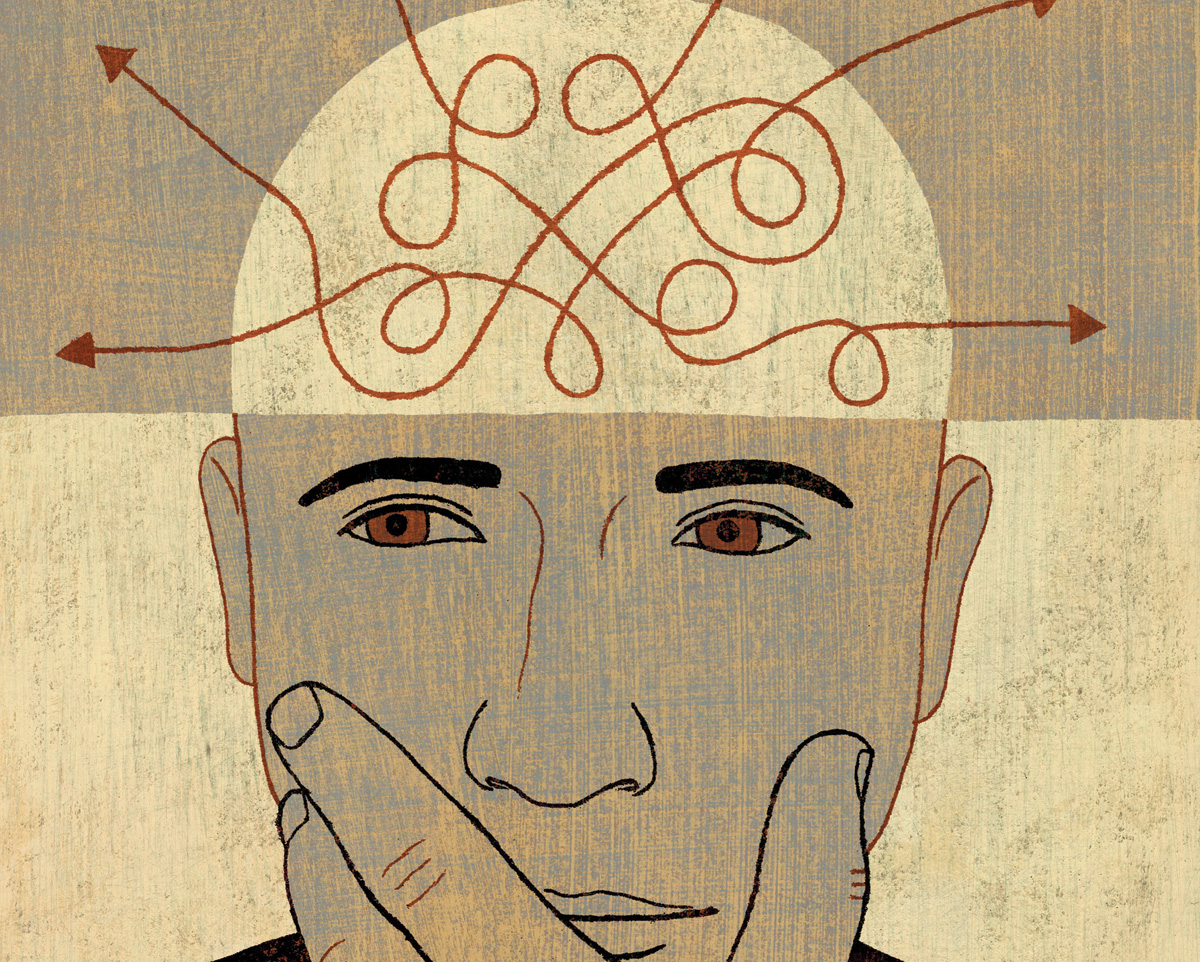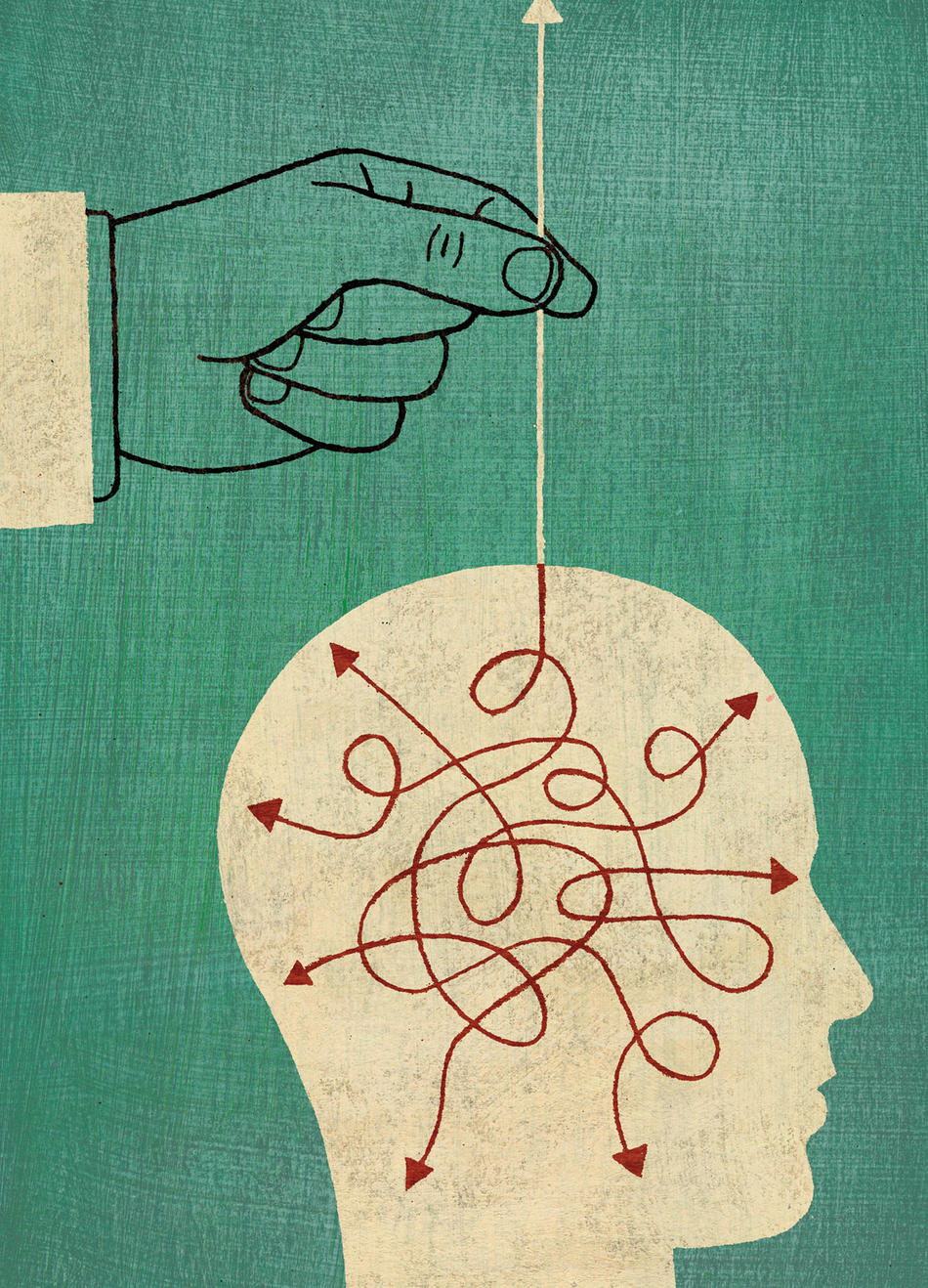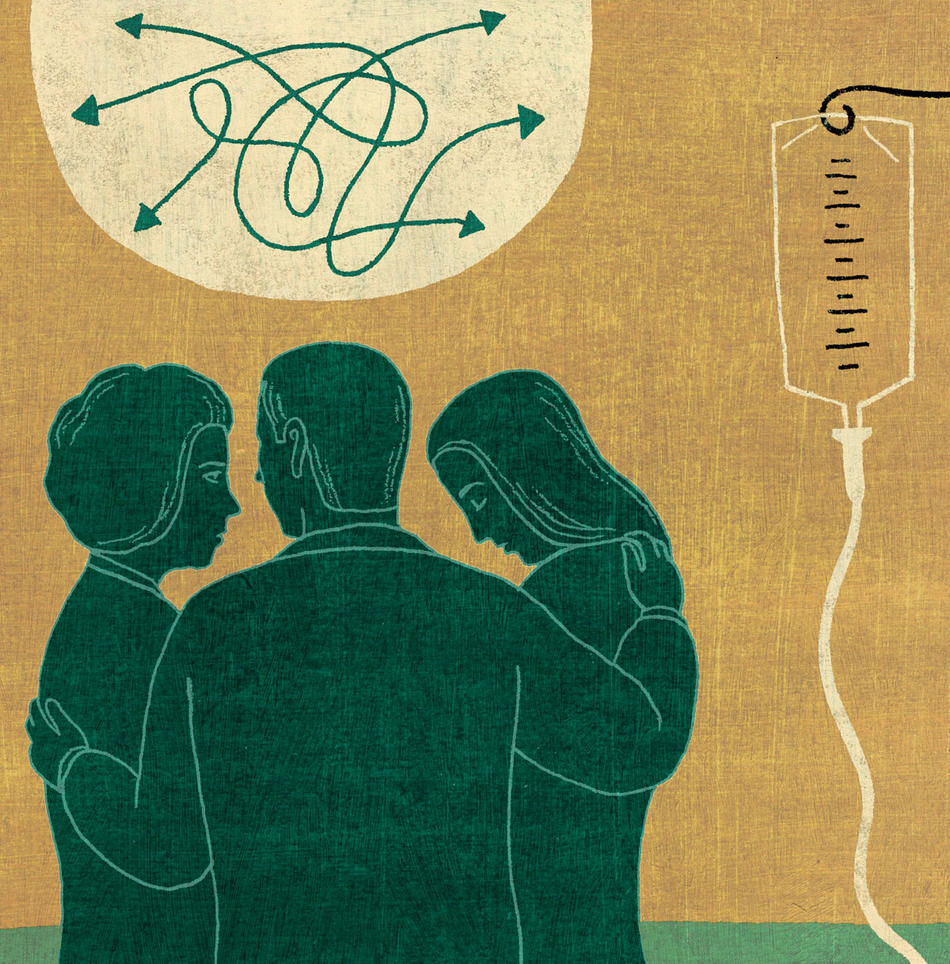
It is, increasingly, the way we die: Hooked up to ventilators, IV drip bags, feeding tubes, and catheters, we breathe on, stubbornly and uncomfortably, until someone tells a doctor, Let him go.
Today, nearly one in five Americans spends their final days in a hospital’s intensive-care unit. Many will have been connected to life-support systems for weeks or even months. And once a terminally ill person has gone unconscious, it’s usually a loved one who decides when the most aggressive forms of life support are removed.
When is the right time to pull the plug? When does medical technology become, rather than a life-saving miracle, a way of prolonging a person’s suffering?
“In U.S. hospitals, people don’t get much guidance on this,” says Columbia social psychologist Sheena Iyengar, who studies how people make end-of-life decisions. “A doctor will tell you if he thinks your mother or father is comfortable, but if you’re considering letting them go, you’ll need to broach the subject yourself. The doctor will then give a quick overview of the options and say, ‘Well, tell us whenever you’ve decided,’ and walk off.”
It’s not this way in all Western countries. In France, for instance, doctors consider it a part of their job to inform family members when they think it’s time to remove a person from life support. “The French take a more paternalistic approach,” says Iyengar. “They do this partly to protect the family from the stress of making the decision.”
For many Americans, the idea of letting a doctor decide when a parent or child should die might seem outrageous. After all, fear of so-called death panels — an allusion to government rationing of medical treatment — nearly derailed Barack Obama’s health-care-reform bill last year. Iyengar believes, however, that Americans have a lot to gain by deferring to doctors. She’s found that people who receive guidance from experts when making complicated decisions, including when to suspend life support, tend to be more at peace with the outcomes.
“Americans value personal autonomy almost as much as they value life itself,” says Iyengar. “But we need to ask ourselves: Are there some choices we’re better off not making?”
How many is too many?
Iyengar, who is the S. T. Lee Professor of Business at Columbia Business School, has made a career of decoding how we make decisions, from the yogurt we place in our shopping carts to the mutual funds we select for our IRAs. Her conclusion: Although we crave lots of choices, we get overwhelmed easily, even paralyzed with indecision, when weighing our options.
Iyengar, 41, is a celebrity in social science circles, but her ongoing work on end-of-life care isn’t yet well known. She’s built her reputation by teasing out the subtleties of how people make much less weighty decisions.
Iyengar’s big moment of inspiration came in a grocery store in the early 1990s, while she was a graduate student at Stanford. She recounts the episode in her recent book, The Art of Choosing, which provides a readable overview of her work. Back in Menlo Park, California, Iyengar often browsed the gourmet aisles of Draeger’s Market, only to leave empty-handed. She wondered, Might hundreds of varieties of produce be enough to cloud a shopper’s mind?
To test her hypothesis, Iyengar set up a tasting booth at Draeger’s. She offered some shoppers 6 varieties of jam, and others 24. She found that customers were more likely to approach the table with the larger selection, yet they were 10 times more likely to buy jam from the table with only six samples. Too many possibilities, it seemed, left a bad taste in shoppers’ mouths.
The jam study — which Iyengar soon repeated using Godiva chocolates and other foods, with the same result — provided a news-you-can-use nugget that made headlines across the country. It would also prove influential in the field of psychology. Since the 1960s, researchers interested in human decision making had focused mainly on how our irrationality hinders our ability to make good choices, such as through our tendency to be biased in favor of familiar options. Iyengar’s work opened up lots of new questions, such as: When can choosing be a pleasant experience? How many choices are too many? How does the range of our options affect our satisfaction with what we eventually choose?
Another one of Iyengar’s early studies found that Americans who observe a fundamentalist religious faith are happier than those who follow a more liberal practice. Her findings seemed counterintuitive to many psychologists: She found that people who observe customs that limit their personal freedom — for example, by prohibiting premarital sex, alcohol, or some kinds of music — nevertheless feel a greater sense of control over their lives.
“Iyengar’s work is brilliant and has had a profound impact,” Harvard psychologist Daniel Gilbert recently told the Chronicle of Higher Education. “It has shown us that there are cognitive and emotional costs to decision freedom.”
Although her work is rooted in psychology, Iyengar is an interdisciplinary scholar, drawing from a variety of fields — business, economics, philosophy, sociology, and biology. Over the course of her career, she’s found more and more practical applications for her work. In recent years, she’s examined enrollment in 401(k) retirement savings plans, determining that participation rates fall as the number of fund options increases. Ditto for Medicare’s prescription-drug plan.
And companies are responding.
Partly as a result of the jam study, consulting powerhouse McKinsey & Company instituted its 3-by-3 Rule: Never present clients with more than three options at a time. Similarly, Iyengar tells of an encounter with a Fidelity Investments executive who told her the study inspired a new mantra at the firm: Narrow it down.
Iyengar’s work has also demonstrated cultural variables associated with choice. She found, for instance, that college students in Japan are less bothered than American students about being told what to wear, what to eat, and what time to awake in the morning.
“The Japanese find meaning by fitting in and making other people happy,” Iyengar says, “and therefore they demand autonomy in far fewer aspects of their lives.”
Elements of style

The daughter of Indian immigrants, Iyengar was raised in a strict Sikh household in Flushing, Queens. As a girl, she kept her dark hair long and uncut, wore special undergarments at all times, even in the shower, and attended temple three times a week. As is customary among Sikhs, there was talk of an arranged marriage.
Then, when Iyengar was a teenager, she went blind, the result of a genetic condition called retinitis pigmentosa. She also began rebelling: She wore hip clothing and stopped attending religious services. After a high-school guidance counselor told her that attending a community college was the best option for a blind person, Iyengar’s anger helped motivate her to get accepted into the University of Pennsylvania’s Wharton School.
Governed by so many rules and restrictions — religious, cultural, and physical — Iyengar “became acutely aware of the pleasures, as well as the frustrations, of freedom and its limitations,” she says. “It’s all rooted in my upbringing.”
Nowadays, Iyengar’s personal life is informed by her work. Consider the way she selects her clothes and the furnishings in her apartment: by enlisting the advice of friends she trusts to translate her personality into the visual language of fashion and home decor.
“I listen to lots of people’s interpretations of who I am and how I should look,” she says. “I choose to delegate — the same way most of us are happy to relinquish our dinner-music choice to Pandora and our wine choices to the New York Times Wine Club.”
But doesn’t everybody crave autonomy when it comes to something as intimate as personal style?
“It depends on whether you see your personality as existing apart from other people or as a product of your relationship with people,” Iyengar says. “Most of us think the way we see ourselves represents some deep truth, but very often we’re wrong. What does it mean if I consider myself to be a great worker if my boss gives me a critical performance review? Do I ignore him? I think that when we open ourselves up to other people’s opinions and advice, we learn things about ourselves. And then we can change in ways that ultimately give us more control over how people see us. In a sense, we become more free. It’s possible that my blindness helped me see this, but I think this is a part of the human condition.”
Flying solo
About two years ago, Iyengar, along with Simona Botti, of the London Business School, and Kristina Orfali, of the Columbia Center for Bioethics, set out to explore the psychological costs associated with removing a family member from life support. Specifically, they looked at 19 couples in the United States and France who had made the agonizing decision to let a premature infant die.
“Before this, we’d studied how people make pretty routine decisions,” says Iyengar. “This was going to open up some dramatic new questions.”
All of the parents interviewed for the study had decided to take their babies off life support within a few weeks of their births. The difference was that the French parents had followed the advice of doctors, whereas the American parents had been left to make the decision on their own.
Iyengar and her colleagues wanted to know: How did the parents cope emotionally afterward? Did they feel they’d done the right thing? Did they wish that a doctor had given them more or less advice?
The study, published in the Journal of Consumer Research in 2009, showed that the American parents, three months after their child’s death, struggled more with feelings of guilt, doubt, anger, depression, and resentment. “The emotional trauma was incredible,” says Iyengar. “It was straight out of the novel Sophie’s Choice. They’d say things like, ‘I feel like I played a role in an execution,’ and ‘I feel like I’m not grieving enough, like something’s wrong with me,’ and ‘The hospital workers wanted to torture me.’”
The American parents were also haunted by what-ifs, imagining all of the unlikely scenarios in which their child might have been able to survive and lead a normal life. Most of the French parents, in contrast, said they believed that their child’s death was inevitable.
“The French were coping better overall,” Iyengar says. “They’d say, ‘Our child gave us a new perspective on life,’ and ‘No one could have changed this; I don’t blame anyone.’”
The most obvious lesson here, according to Iyengar, is that it’s comforting to receive guidance from an expert in a stressful situation. “When a doctor offers a recommendation, you’ll feel less guilt about what you’re doing,” she says. “You can tell yourself, ‘I’m only doing what the doctors are advising.’”
There were also some surprises. Although the American parents were tormented by having ended their child’s life, they told the researchers that they couldn’t imagine having relinquished that decision to a doctor. “They insisted the choice had to be theirs alone,” says Iyengar, “even as they were trapped by the burden of it.”
A sticky proposition
There’s considerable debate among bioethicists about whether patients and their families in the U.S. and other industrialized nations receive too little guidance in making painful medical decisions. The American medical system, in this regard, is more typical than the French system. In France, doctors adhere to a traditional set of ethical guidelines that date back to the time of Hippocrates and hold that patients are incapable of acting in their best interest. Doctors throughout the West tended to subscribe to this view until the 1960s and 1970s, when the idea took root that patients are in the best position to choose their own treatment. In the U.S. and many European countries, a series of court cases formalized the doctrine of informed consent, requiring doctors to detail all treatment options, along with their potential benefits and risks, and to obtain patient permission before administering care.
“The question now being asked by many medical researchers is whether this line in the sand is too strict,” says Orfali, who is an associate clinical professor of bioethics in pediatrics at Columbia University Medical Center. “I’ve found that patients often need a type of advice and emotional support that only doctors can provide, and which they’re not getting.”
Iyengar, Botti, and Orfali were the first to study how people are affected emotionally by watching over a family member’s removal from life support. They say one implication of their work is clear: U.S. doctors should be having more candid conversations with dying patients and their family members about the range of end-of-life options available to them, such as hospice care, the removal of ventilation, and instructions to avoid resuscitation.
But this is a tricky proposition, Iyengar says, in part because U.S. doctors are paid according to the number of patients they see. In many other countries, doctors are salaried under nationalized health-care systems. “U.S. doctors pack in so many patients,” she says, “they simply do not have the time to dedicate to these types of conversations.”
There’s also the threat of malpractice. “Clearly the litigiousness of U.S. society plays a role,” she says. “I suspect that many doctors would like to tell a patient’s family when they think it’s time to let the person go, but they’re too scared to express their opinions on something like that.”
But there are ways that patients can make these types of traumatic decisions more manageable, according to Iyengar. And in an upcoming study to be conducted in San Francisco, she’ll examine one of the possibilities: the use of advance health-care directives, commonly called “living wills.” Living wills typically leave instructions limiting the use of life support.
Iyengar says her new study will address interesting questions about the culpability felt by family members, who are usually the ones who must inform the doctor of a patient’s living will. “My hypothesis is that family members will feel some guilt about their role in the death, but not as much as when there’s no will,” she says. “If you can tell yourself that you’re merely carrying out that person’s wishes, you should be able to externalize a lot of the guilt.”
The final option
Very few Americans are aware of end-of-life options, such as living wills and hospice care, multiple studies have shown. Another reason why there’s little discussion about these options in hospitals, Iyengar says, is that health-care providers earn lots of money sustaining people on life support and administering expensive tests in their final days. Currently, it costs up to $10,000 a day to maintain someone in an intensive-care unit. According to a CBS News report aired in 2009, Medicare paid out $50 billion for doctor and hospital bills during the last two months of patients’ lives the previous year — a figure nearly equal to the total budget of either the Department of Education or the Department of Homeland Security at the time.
A good way to educate people, Iyengar suggests, would be for the U.S. government to distribute information about living wills in the paperwork packages that all citizens receive when they become eligible for Social Security benefits. She also supported an early version of President Obama’s health-care-reform bill that would have required Medicare to cover doctor consultations about end-of-life options. Some right-wing critics of the bill charged that this would lead to the creation of “death panels,” or government bodies that would halt care for the terminally ill as a cost-cutting measure. There was nothing in the bill that would have permitted the rationing of treatments, but senators, amid a conservative media uproar, excised the provisions.
“People say in surveys they don’t want to be kept alive for long periods on life support,” Iyengar says. “Yet no one likes to think about dying, so we put off these types of decisions unless we’re encouraged to consider them. Discussing with people how they want to die doesn’t limit their freedom. Failing to discuss it does.”
Adrienne Frank contributed to this article.




